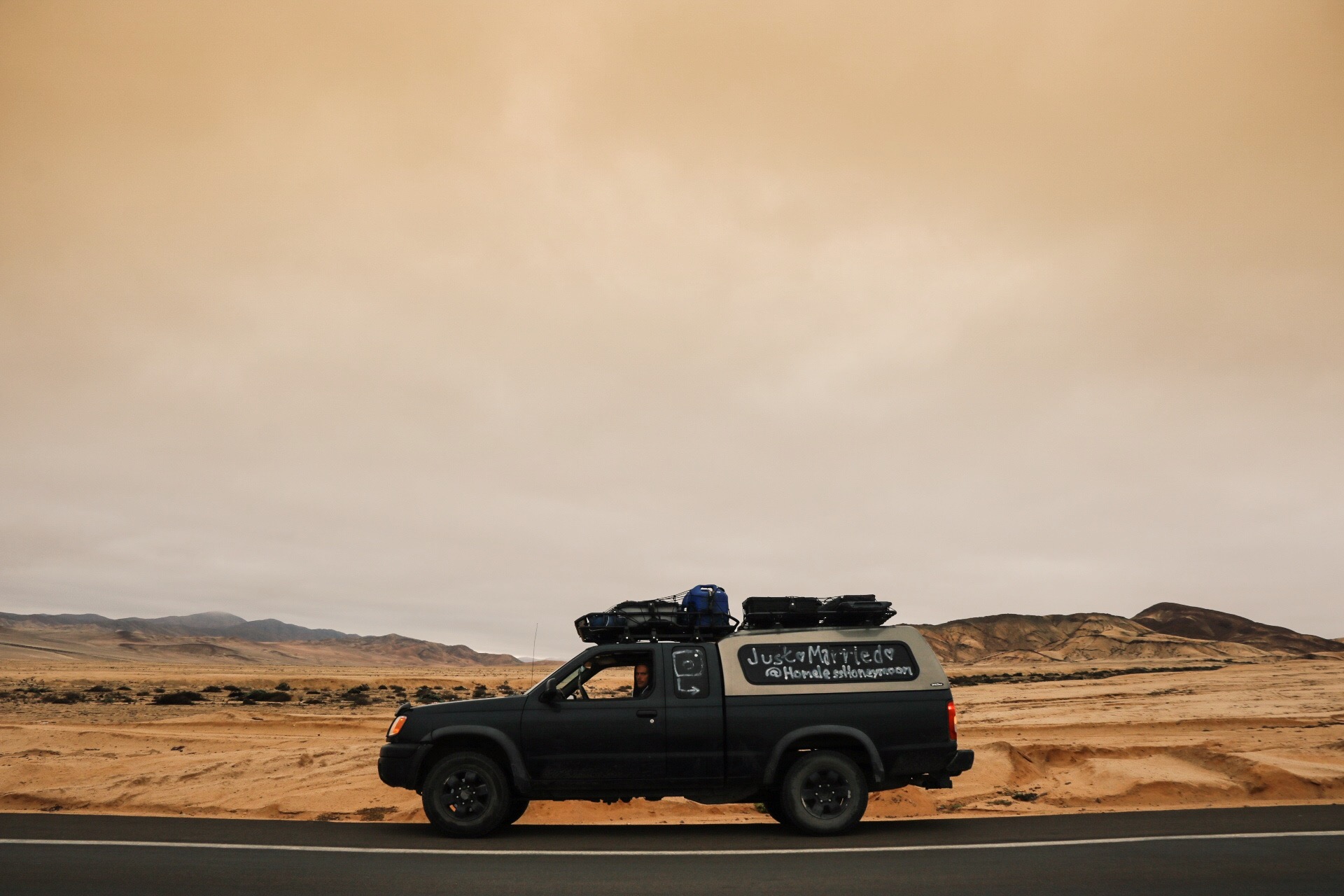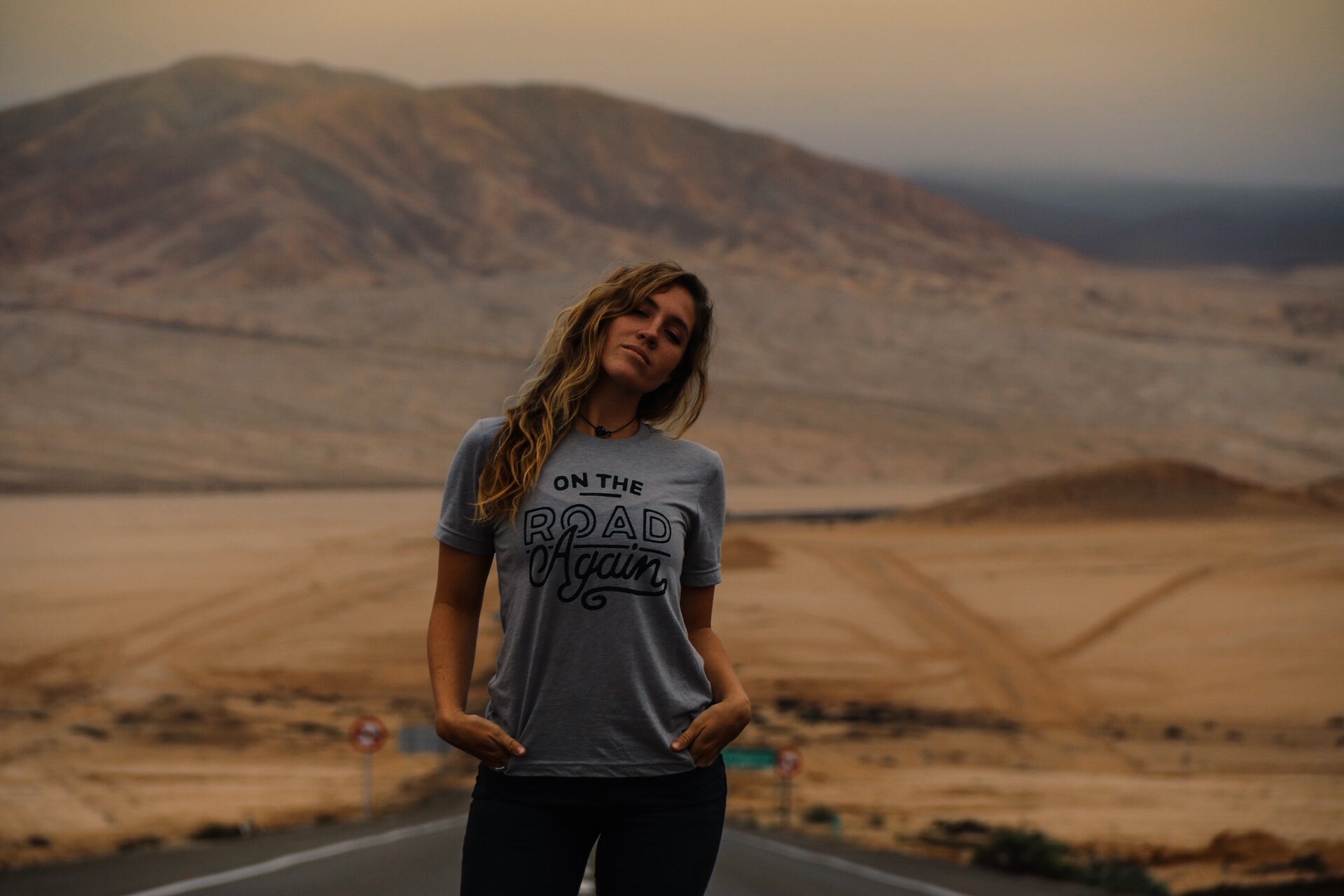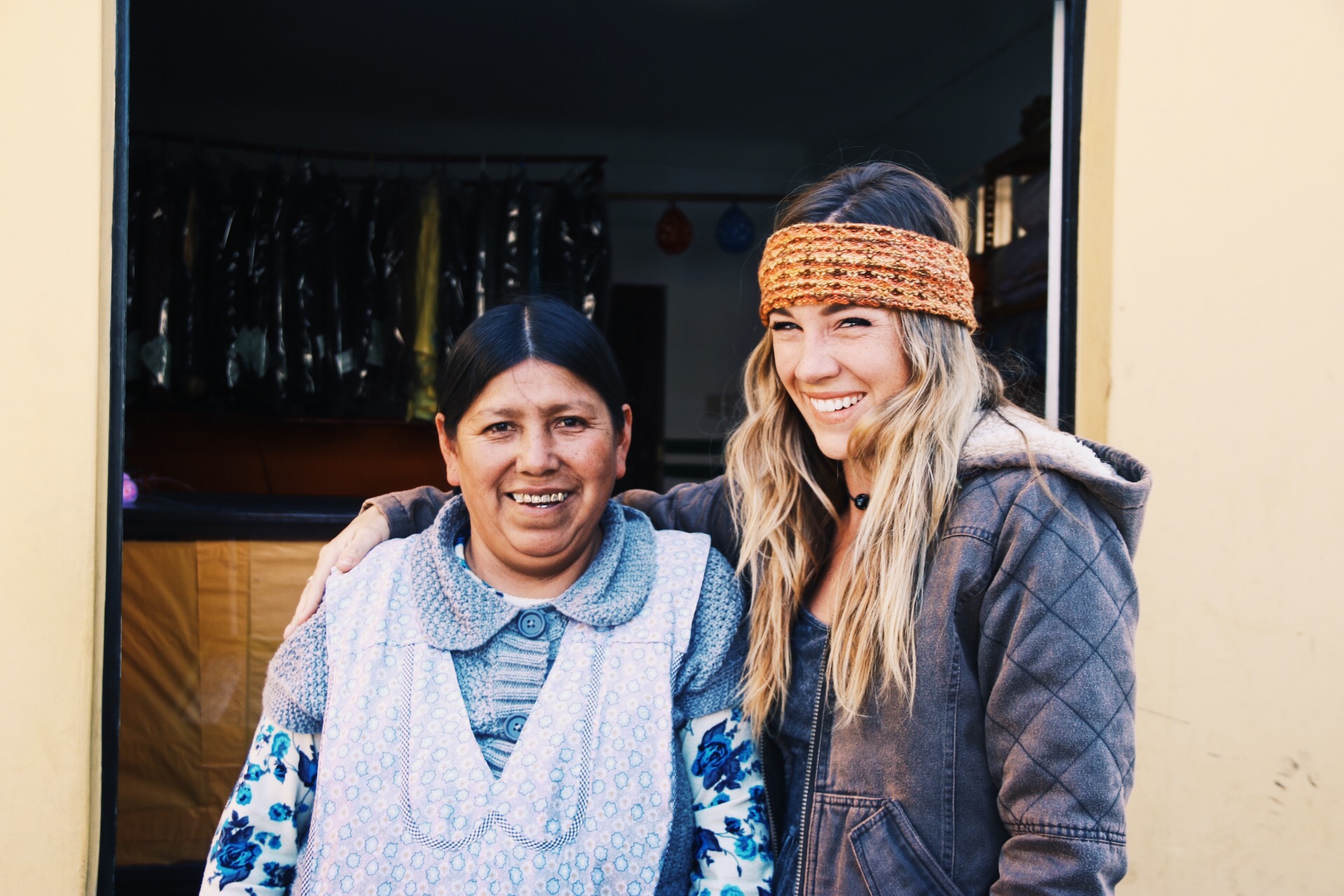Northern Chile & Bolivia
Valle de Luna on the way to San Pedro de Atacama
I was born in the desert, so that may be why I tend to crave it...
After spending months in the Patagonian winds, Trevor and I had a hunger for dry air and red dirt. We love the desert, that's why we got married in it, and is quite possibly where we fell in love with road tripping.
We made our way north and immediately started to feel at home. We spent a couple of days zipping in and out of desert rocks, sleeping at dusty gas stations, and cooking leftovers on the hitch of our truck before we found our way to San Pedro de Atacama.
This desert is well known for its salt flats, perfectly iconic volcanoes, and the Valle de la Luna. The town itself is peppered with kitschy shops, trendy bars, and hip, foody-like restaurants all built into an adobe-mud wonderland. We spent a couple of nights sleeping in the parking lot outside of the town walls, which was not incredibly tranquil at all, but free nonetheless. Most everything that was built and priced for tourism was a bit out of our budget, so we found adventure and experiences outside of the city walls.
Trevor chillin in the salt flats of the Atacama wearing Moore Collection.
Deserts of Northern Chile.
Volcan Licanabur on the border of Chile and Bolivia.
Salt Flats in San Pedro.
Valle de la Luna.
Bree wearing Moore Collection.
Wildlife near the Tatio Geysers.
Camp Spot in San Pedro.
We rallied through the salt flats, explored flamingo-filled lagoons, perched on red rocks and watched watercolor sunsets, and slept in the middle of nowhere at the base of giant volcanoes. It was hot days and extremely cold nights, but blissful and awe-inspiring the entire time.
High Altitude exploration in Bolivia.
Crossing into Bolivia from San Pedro included an approximate 14,500 foot mountain pass; a couple of passport stamps; and an aduana stop at a chemical plant an hour drive and about 1,500 feet higher. By far, it was the simplest and most strange border crossing yet. At the border crossing, there were 20-30 Jeeps picking up backpackers headed through the non-avoidable National Park to Salar de Uyuni. The entire drive for the remainder of the day was at about 15,000 feet as we passed colorful lakes filled with hundreds of flamingos and Jeeps speeding off in all directions. We parked off the road in a dug out and made camp for the night in this wilderness of a country.
Uyuni is a dusty town that is a main base for access to the Salar. We quickly found that the town was constantly out of fuel and that foreign vehicles were charged three times the local price, but with our broken Spanish, Trevor found that he was able to negotiate the price down a bit. Heading out of the town, we passed a couple of Salt Hotels that were strange and beautiful at the same time. (We would love to stay in one some day and watch the Dakar races.) By the time we arrived at the flats, it was mid-April and most of the water that floods the flats was dried up. We had never driven on something so vast. We could put the pedal to the floor and take off in any direction for a handful of minutes without seeing anyone! The flats are dotted with "islands" that are covered in strange cactus and beautiful rocks, and we chose our very own to set up camp for the night. We celebrated Easter and had plenty of salt for our deviled eggs.
Alpacas in Bolivia.
Trevor wearing Outback Gear in Salar de Uyuni.
Salar de Uyuni.
Camping out on the Salar.
We exited the flats from the other side and entered small town after small town of mud homes and square plots growing quinoa. The land was beautiful and the men and women in traditional clothing were out working the fields and handling the animals.
La Paz, hands down, was the most amazing city we have ever visited. Built in a valley, the city extends up steep cliffs on all sides, so steep that we had to drive our truck in four-wheel-low to get up the busy streets. The city clashes modern shops and university students with traditional Amari women dressed in layers of skirts selling goods on all ends of the spectrum. We stayed at Colibri Camping and enjoyed a cooking class where we learned about authentic Bolivian food preparation and preservation.
La Paz, Bolivia.
Beautiful Rock formations in La Paz.
Bree made friends with the amazing Laundry woman.
From here, we drove on one of the most amazing roads to Coroico, a jungle oasis amongst the high elevation country. The road is famous for its "old" portion, "The most Dangerous Road in the World" which is now replaced with an upgrade that does not disappoint for views and beauty. We camped at a hostel in Coroico, where we enjoyed a pool, and a day-long walk to amazing waterfalls.
The Road to Coroico.
Leaving La Paz for the Jungle.
Our Next stop in Bolivia was Lago Titicaca, which is the world's largest high altitude lake and is shared across the border with Peru. We stayed in the parking lot of a hotel in Copacabana while we enjoyed the small tourist hub. Our first touris-y attraction was a day trip to the Isla Del Sol, an island with no cars and no roads. We were able to hike around, mingle with the town people, and admire all the livestock in the fields.
Coca Tea in Lago Titikaka.
Bolivia is one of the most culturally preserved countries we have ever visited. It was eye-opening, friendly, and colorful. If you ever have any questions about Bolivia or the Atacama, as always, comment below and we would love to fill you in more!
Thank you for reading! Be safe, adventurous, and loving!
-Bree and Trevor

























